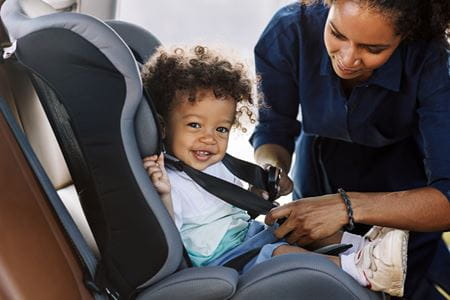In 1933, the Bunny Bear Booster Seat was the first car seat designed to help caregivers keep an eye on their children when traveling from place to place. However, the first car seat designed with safety in mind wasn’t created until almost 30 years later by Jean Ames in 1962. This car seat, the Jeenay Car Seat, was designed to be rear-facing and had a 3-point harness system. Nine years later, The National Highway Traffic Safety Administration (NHTSA) mandated car seats must be fastened into the car by a seatbelt. By 1985, it was required by law that those transporting children use car seats during the trip.
Despite the regulations in place, in the United States during 2021, 711 children ages 13 and younger died during vehicle collisions. Of those children, 226 were not restrained. NHTSA estimates that car seats reduce the risk of fatal injury to infants by 71% and for toddlers by 54%. Currently, up to 85% of car seats are not installed properly or fit the child properly.
Knowing these statistics, Safe Kids Indiana, Dorel Juvenile, Anthem, the Indiana University School of Medicine Automotive Safety Program, Indiana Criminal Justice Institute, and Ivy Tech are collaborating to bring back the annual Car Seat Safety Inspection event at Ivy Tech. At last year’s event, 161 car seats were inspected and 129 new car seats were given to those whose current car seats were unable to pass the inspection. This year’s event will be Wednesday May 10th from 4:30-6:30 pm, at Ivy Tech Community College, 108 W. 28th St. Indianapolis, IN 46208.
Professionals will inspect car seats for proper installation based on recommendations from the NTSA, such as:
-
Children under age 1 should always ride in a rear-facing car seat.
-
Keep 1- to 3-year-olds in rear-facing car seats for as long as possible. Once children outgrow the height or weight limit for their rear-facing car seat, they should ride in forward-facing car seats with a harness and tether.
-
NHTSA recommends children 4- to 7-years-old use forward-facing car seats until they reach the top height or weight limit of the car seat’s manufacturer instructions and then move to a booster seat.
-
Keep 8- to 12-year-olds in booster seats until they are big enough to fit into seat belts properly.
-
Be sure all passengers use seat belts correctly, with the lap-belt low on the hips and the shoulder belt across the chest, not resting on the neck. Never place a shoulder belt under an arm or behind your back.
If you are interested in volunteering at the event, sign up here. The clinic will be canceled in the event of bad weather or emergency. For more information call 317-274-2977.
For those who are not able to attend the clinic, the best place to find a car seat inspection station is the ICJI website or the ASP website for a list of car seat inspection stations across Indiana. Additionally, Buckle Up For Life has slide shows and step by step videos on how to properly install a car seat.
